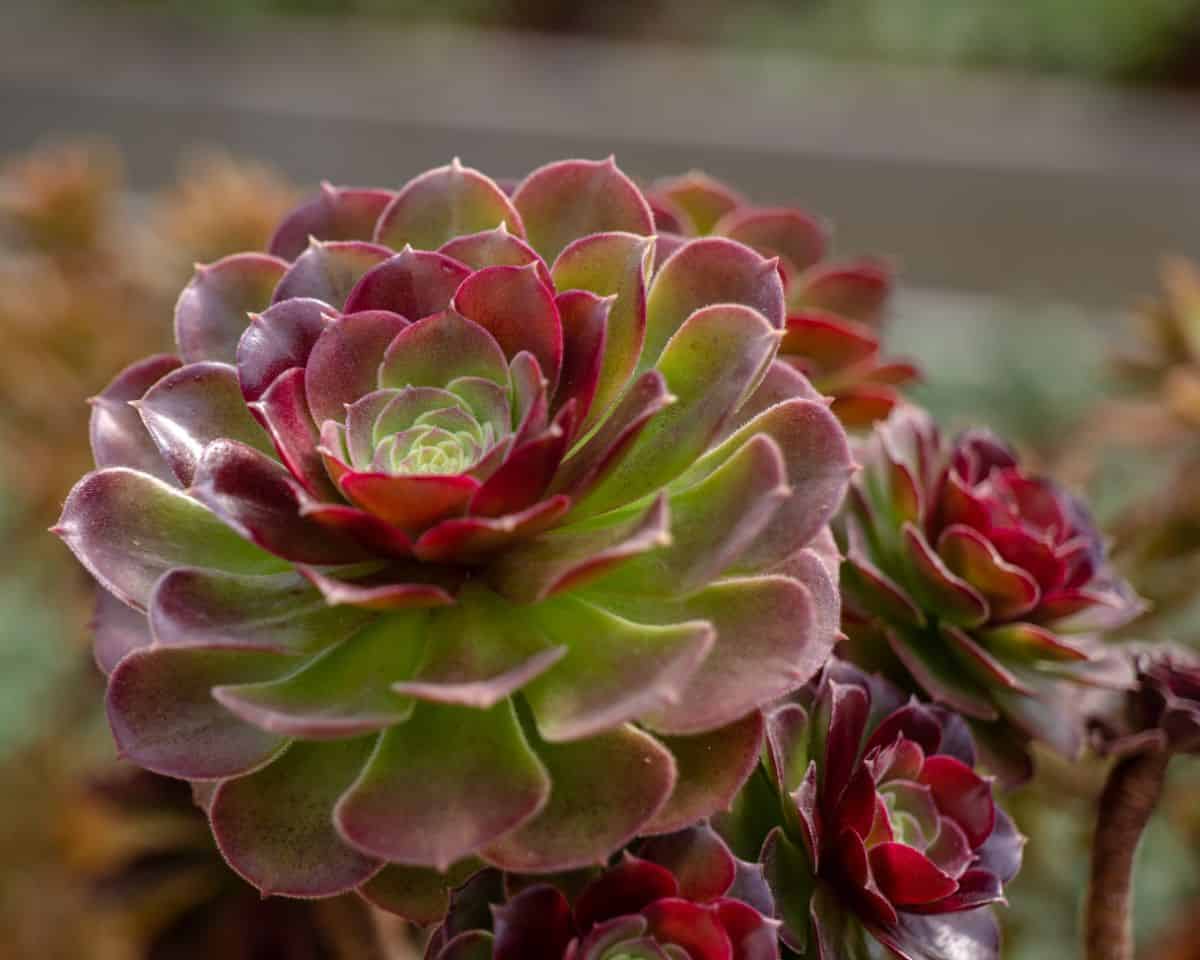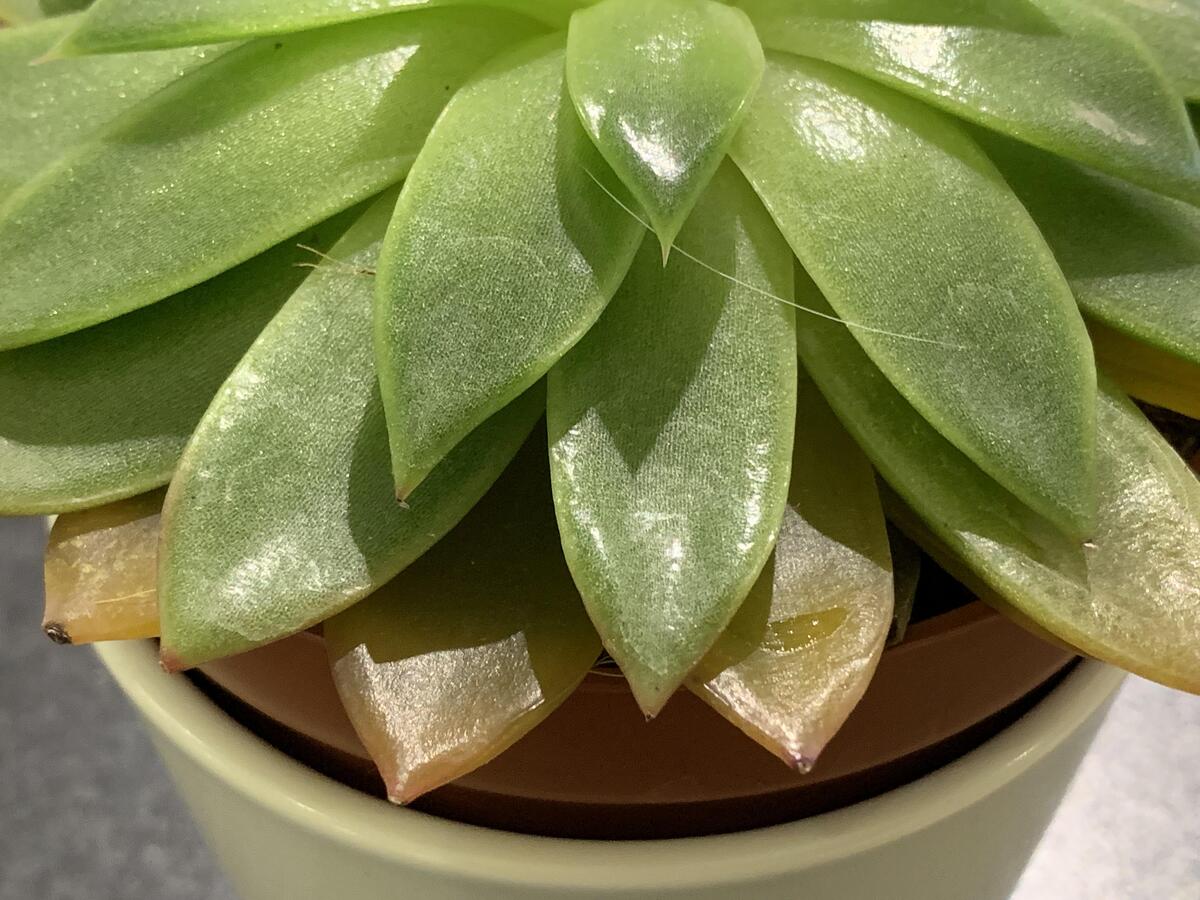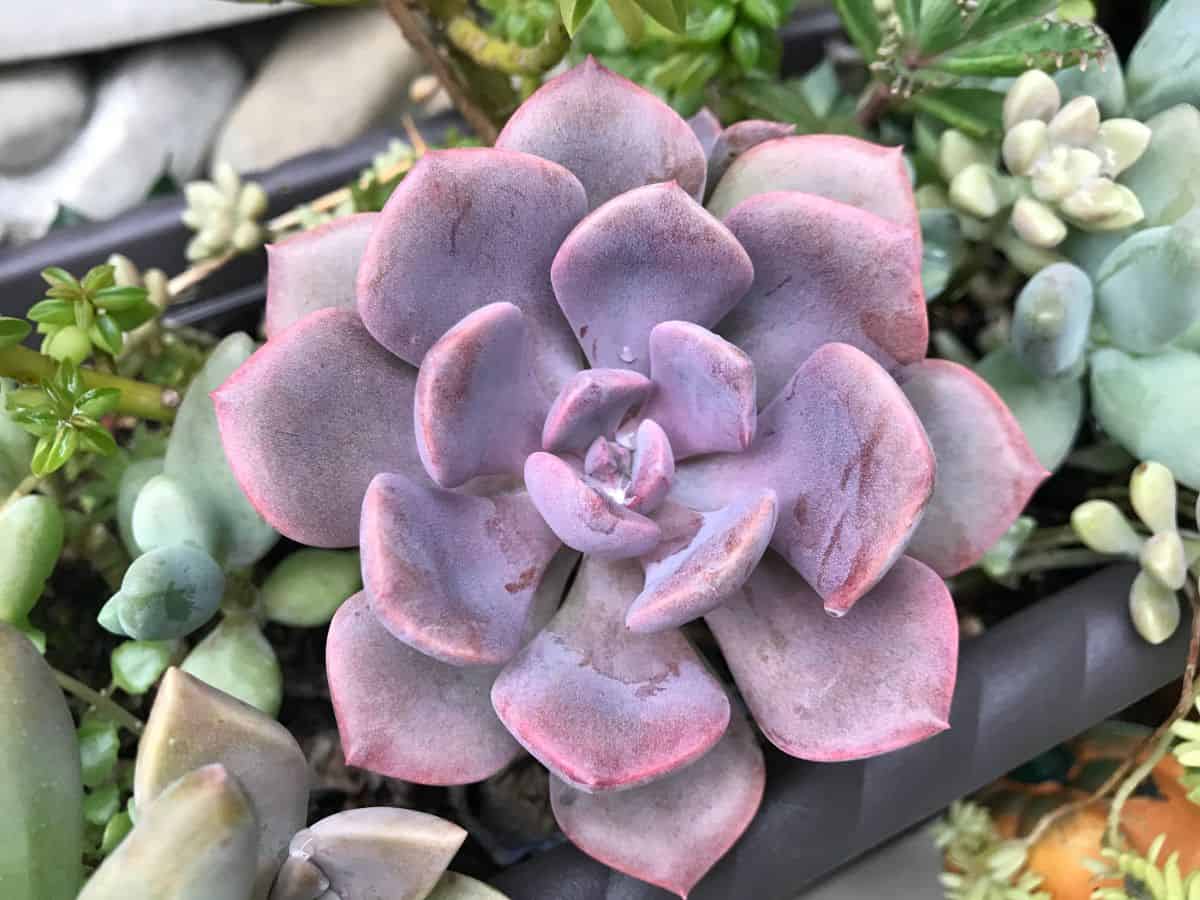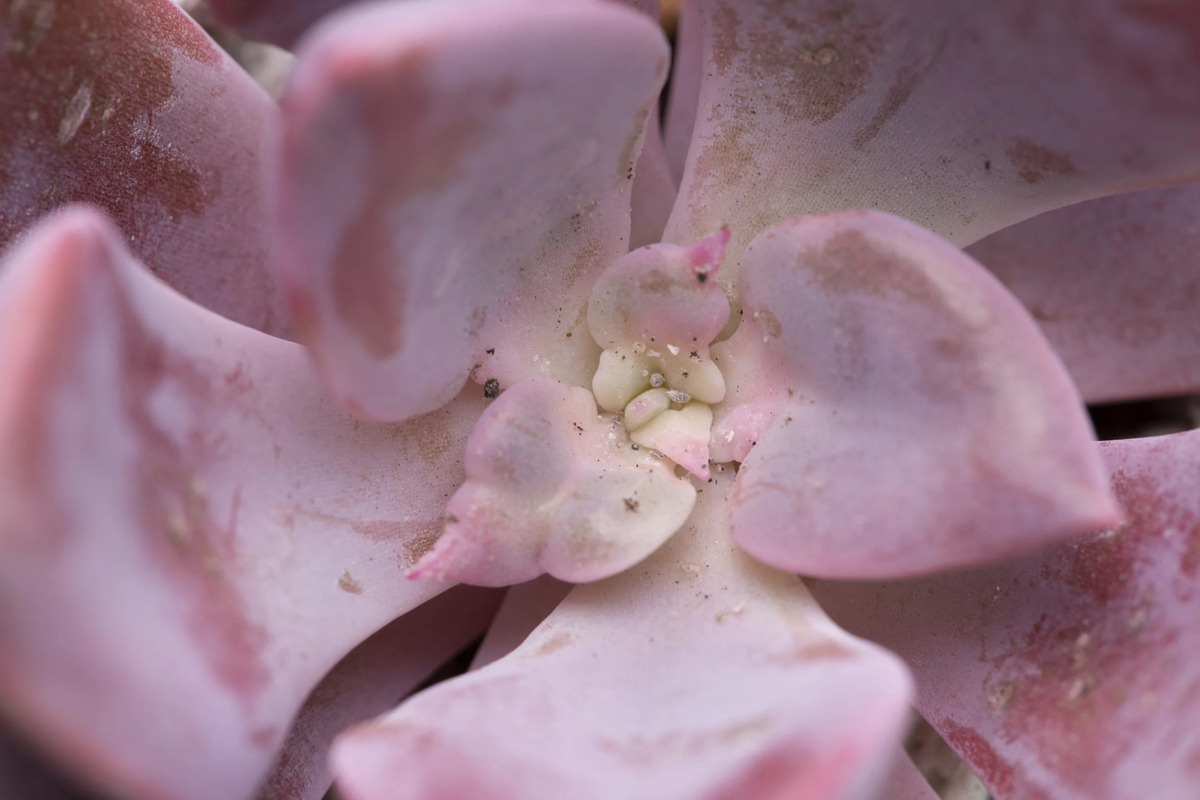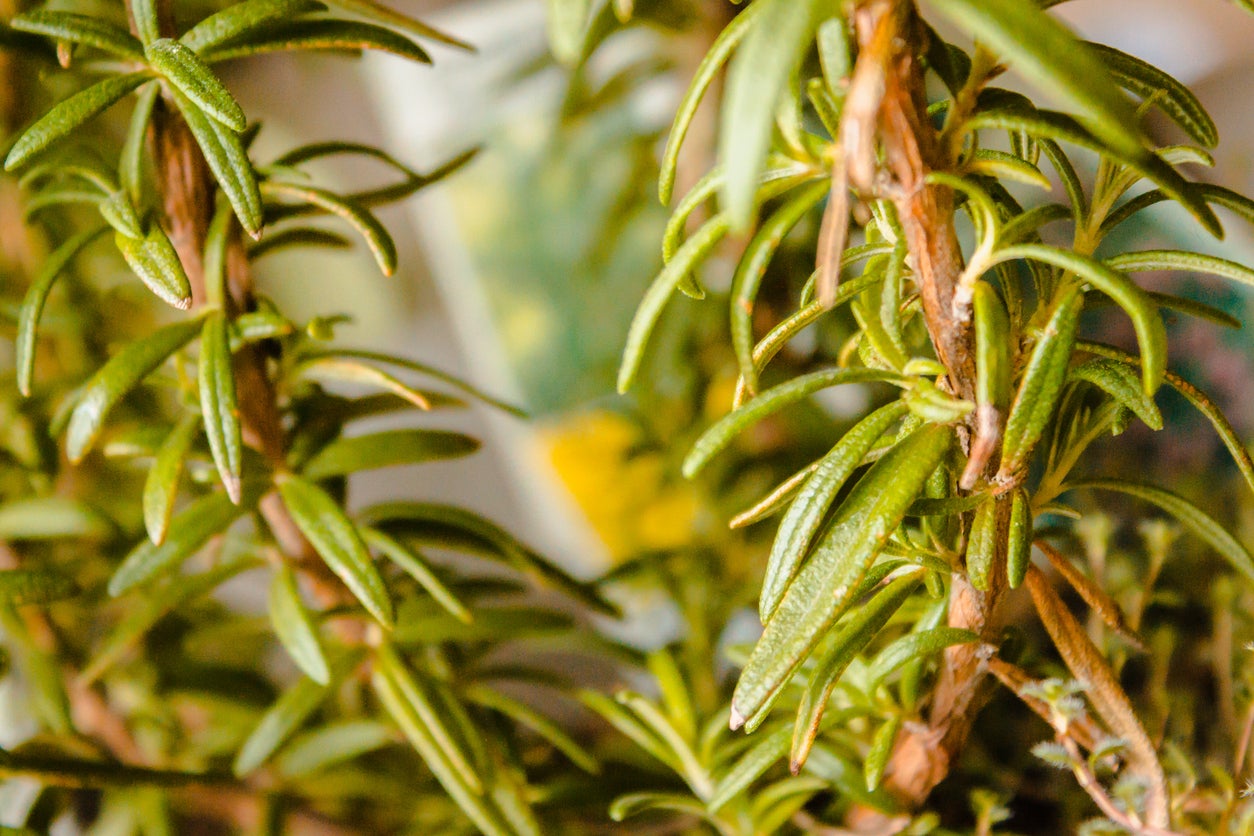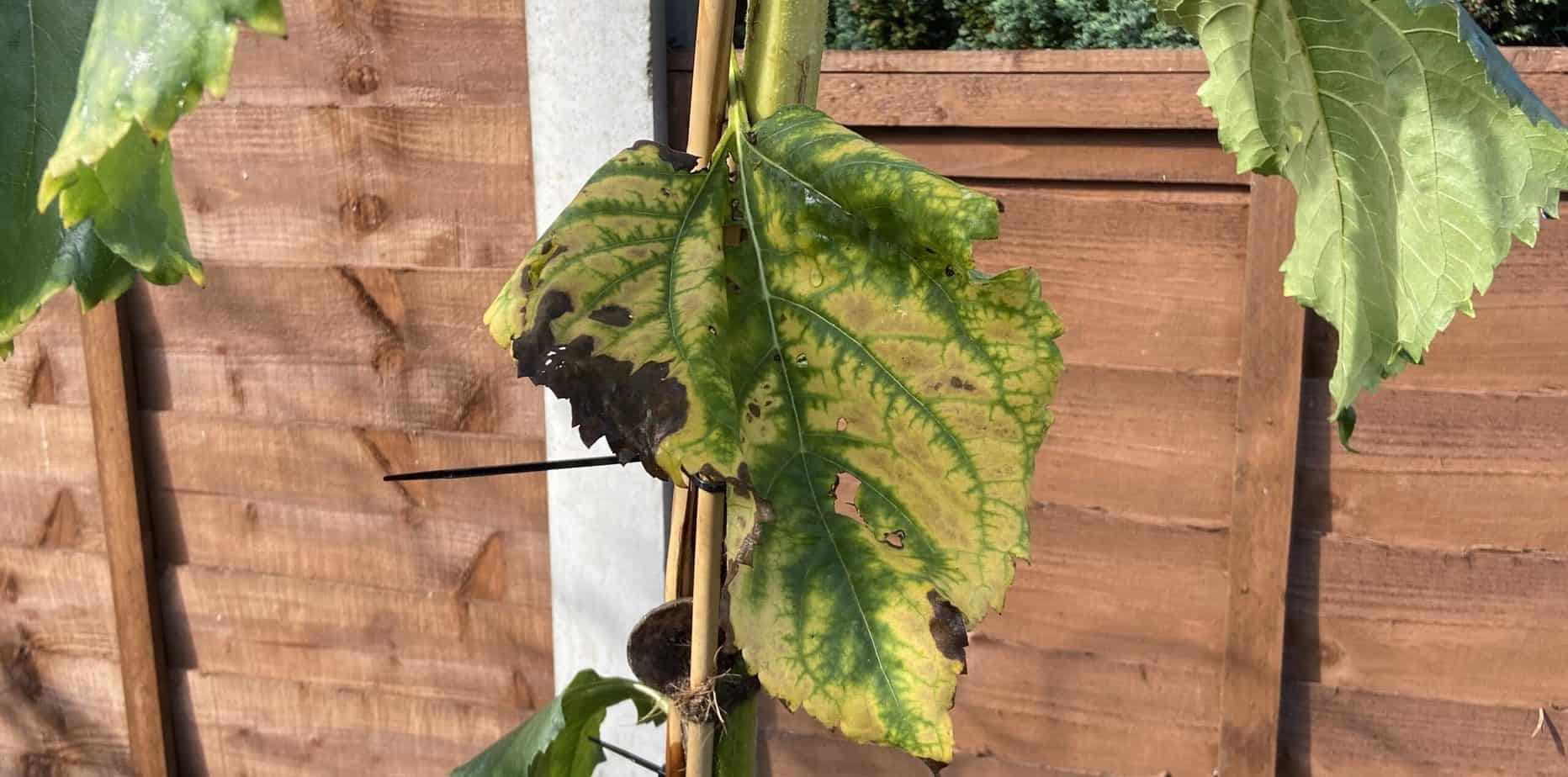Home>Gardening Techniques>DIY Projects>How To Turn A Shed Into A Greenhouse


DIY Projects
How To Turn A Shed Into A Greenhouse
Modified: January 22, 2024
Learn how to transform a shed into a vibrant greenhouse with these easy and affordable DIY projects. Enhance your gardening experience today!
(Many of the links in this article redirect to a specific reviewed product. Your purchase of these products through affiliate links helps to generate commission for Chicagolandgardening.com, at no extra cost. Learn more)
Table of Contents
Introduction
Welcome to the world of DIY projects! If you’re an avid gardener or someone who loves nurturing plants, then turning a shed into a greenhouse could be the perfect project for you. With a little creativity and some basic DIY skills, you can transform that old shed into a thriving oasis for your plants.
A greenhouse is a structure designed to provide the ideal environment for plants to grow and thrive. It offers protection from harsh weather conditions, allows for controlled temperature and humidity levels, and provides the perfect amount of sunlight for photosynthesis. Whether you want to start your own vegetable garden, cultivate exotic plants, or simply enjoy the therapeutic benefits of gardening, a greenhouse can be your sanctuary.
Converting a shed into a greenhouse is a popular option for DIYers because sheds are typically sturdy and have existing structures that can be adapted for greenhouse purposes. Plus, repurposing a shed can save you money compared to building a greenhouse from scratch.
But where do you start? How do you go about transforming a shed into a fully functional greenhouse? In this guide, we will walk you through the step-by-step process of creating your own green space. From selecting the right shed to setting up ventilation, lighting, and irrigation systems – we’ve got you covered. So, let’s roll up our sleeves, put on our gardening gloves, and get ready to turn that shed into a greenhouse that will make your plants thrive!
Selecting the Right Shed
The first step in turning a shed into a greenhouse is selecting the right shed for the job. When choosing a shed, there are a few key factors to consider to ensure it will be suitable for your greenhouse conversion.
Firstly, size matters. Determine how much space you need for your plants and make sure the shed provides enough room. Consider the height of the shed as well, as some plants may require extra headroom to grow vertically.
Next, consider the shed’s location. Ideally, it should be situated in an area that receives ample sunlight throughout the day. Plants need sunlight to thrive, so ensuring the shed is in a sunny spot will help provide the necessary light for photosynthesis.
In addition to sunlight, access to water is crucial for your greenhouse. Make sure the shed is close to a water source, such as a hose or a rainwater collection system. This will simplify watering your plants and help maintain adequate moisture levels.
The shed’s construction material is another important consideration. Opt for a shed made of materials that are resistant to moisture and rot, such as cedar or metal. This will ensure that the structure can withstand the humid environment inside the greenhouse.
Lastly, take into account the overall condition of the shed. Check for any signs of damage or structural issues that may need to be addressed before starting the conversion. It’s important to start with a solid foundation to create a successful greenhouse.
By carefully selecting the right shed, you’ll lay the groundwork for a successful greenhouse conversion. Remember to consider size, location, access to sunlight and water, construction material, and the condition of the shed. With this in mind, you’re ready to move on to the next step – preparing the shed for conversion.
Preparing the Shed for Conversion
Now that you’ve selected the perfect shed for your greenhouse project, it’s time to prepare the space for conversion. This step is crucial to ensure that your plants will thrive in their new environment. Let’s dive into the essential tasks involved in preparing the shed for its greenhouse transformation.
The first task is clearing out the shed. Remove any items or clutter that may be stored inside. You want a clean and open space to work with. This is also an excellent opportunity to declutter and organize your gardening tools, pots, and supplies.
Next, assess the shed’s structure and make any necessary repairs. Check for any leaks, cracks, or damage that could compromise the integrity of the greenhouse. Repairing these issues upfront will save you headaches down the road.
Proper insulation is essential for maintaining a stable and controlled environment inside the greenhouse. Insulate the shed by installing weatherstripping around windows and doors, and consider adding additional insulation to walls and roof if needed.
Ventilation is another crucial aspect to consider. Greenhouses can become overheated, especially during the summer months. Install ventilation systems such as vents, fans, or louvers to regulate the temperature and ensure proper air circulation for your plants.
Lastly, consider installing shelving or hanging systems inside the shed to maximize space and provide adequate room for your plants. Sturdy shelves will allow you to organize your pots and trays. Hanging systems can be used to suspend hanging baskets or install grow lights.
By thoroughly preparing the shed for conversion, you’re setting a solid foundation for your greenhouse project. Clearing out the space, addressing structural issues, insulating the shed, and installing proper ventilation systems and shelving will ensure a successful transformation. Now that the shed is ready, it’s time to move on to the next step – creating a foundation for your greenhouse.
Creating a Foundation
Creating a solid foundation is essential for the stability and longevity of your greenhouse. A proper foundation will help level the shed, provide drainage, and prevent moisture from seeping into the structure. In this section, we’ll discuss the various options for creating a foundation for your greenhouse.
The first option is using a concrete slab. This is the most durable and long-lasting choice, providing a stable base for your greenhouse. However, it can be costly and time-consuming to install. If you choose this option, make sure the dimensions of the slab match those of your shed.
If you prefer a less expensive and more flexible option, consider using cinder blocks or concrete piers. These can be arranged in a grid pattern to support the shed. This method allows for easy leveling and adjustment if needed. It also provides good airflow and prevents moisture buildup.
Another option is using pressure-treated lumber or railroad ties to create a raised bed foundation. This involves constructing a perimeter frame on which the shed will sit. This method is relatively simple and cost-effective, providing good drainage and airflow.
If you have a level and stable ground, you can also use gravel or crushed stone as a foundation. This provides good drainage and helps prevent water pooling around the shed. However, keep in mind that you may need to periodically add more gravel to maintain a level surface.
Before proceeding with any foundation option, it’s important to ensure that the ground is properly leveled. This will prevent any structural issues and ensure the stability of your greenhouse.
Remember to check with local building codes and regulations to ensure compliance before starting any construction on your foundation. It’s also a good idea to consult with a professional if you’re unsure about the best option for your specific shed and location.
Creating a solid foundation is a critical step in turning your shed into a functional greenhouse. Whether you choose a concrete slab, cinder blocks, raised bed, or gravel foundation, ensuring stability, proper drainage, and compliance with local regulations will set the stage for a successful greenhouse conversion.
Installing Ventilation Systems
Proper ventilation is essential for maintaining a healthy and thriving greenhouse environment. It helps regulate temperature, controls humidity levels, and prevents the buildup of pathogens and pests. In this section, we’ll explore the different ventilation systems you can install in your shed-turned-greenhouse.
One of the most common and effective ventilation systems is a combination of vents and fans. Vents allow for passive airflow by guiding hot air to escape from the top of the greenhouse while drawing in cooler air from the sides. Fans, on the other hand, provide active airflow and help distribute fresh air throughout the space. Consider installing vents and fans strategically to ensure proper air circulation.
If you’re looking for a more energy-efficient option, consider installing solar-powered vents. These vents operate using solar energy, eliminating the need for electricity and reducing your carbon footprint. They are equipped with sensors that automatically open and close depending on temperature and humidity levels.
Another popular option is installing louvers or shutters. These can be placed on windows or walls and provide adjustable ventilation. Louvers can be manually or automatically controlled to regulate the amount of air entering the greenhouse. They are particularly useful during hot summer days when you want to maximize airflow but minimize heat gain.
Some greenhouse enthusiasts opt for an evaporative cooling system. This system works by using water to cool the air inside the greenhouse through the process of evaporation. It is especially effective in hot and dry climates. To implement this system, you’ll need to install misting nozzles or fogging systems that disperse a fine mist or fog into the air.
Finally, don’t overlook the importance of proper air circulation inside your greenhouse. Consider adding circulating fans to ensure that air reaches all areas of the greenhouse, preventing stagnant pockets of air and promoting even growth of your plants.
When installing ventilation systems in your shed-turned-greenhouse, it’s important to strike a balance between ventilation and insulation. While ventilation is crucial, ensure that the greenhouse remains adequately insulated to maintain stable temperatures and protect your plants during colder months.
By installing the appropriate ventilation systems in your greenhouse, you’ll create an environment that promotes healthy plant growth and maximizes the potential of your garden. Whether you choose a combination of vents and fans, solar-powered options, louvers, or an evaporative cooling system, ensuring proper ventilation will have a significant impact on the success of your greenhouse project.
Providing Adequate Lighting
Proper lighting is crucial for the growth and development of plants in a greenhouse. While natural sunlight is the ideal light source, it may not always be sufficient, especially during the winter months or in areas with limited sunlight. In this section, we’ll explore different ways to provide adequate lighting in your shed-turned-greenhouse.
If your greenhouse is in an area that receives ample sunlight, positioning it to maximize sun exposure is key. Orienting the shed with the long side facing south will ensure that plants receive the most sunlight throughout the day. Avoid shading from nearby trees or structures that could obstruct sunlight.
For areas with limited sunlight, supplemental lighting becomes necessary. LED grow lights are a popular choice for indoor gardening, as they are energy-efficient and emit specific wavelengths of light that are optimal for plant growth. LED lights are available in a variety of spectrums, including full spectrum, which provides a balanced blend of light for all stages of plant growth.
When installing grow lights, consider the needs of your plants. Different types of plants have different light requirements, so it may be necessary to adjust the intensity and duration of lighting accordingly. A timer can be used to automate the on and off cycles, ensuring consistency and avoiding overexposure.
Proper positioning of the grow lights is crucial. Hang the lights at the appropriate height to ensure uniform coverage and avoid hot spots or shading. As plants grow taller, adjust the height of the lights to maintain the optimal distance between the plants and the light source.
In addition to artificial lighting, consider using reflective materials to maximize the use of natural light. White or reflective surfaces can help bounce and distribute sunlight throughout the greenhouse, reaching plants from different angles.
Regular monitoring of lighting conditions is important. Pay attention to the light levels and adjust accordingly to meet the needs of your plants. Remember that overexposure to light can be harmful, so finding the right balance is key.
By providing adequate lighting in your shed-turned-greenhouse, you’re creating an environment where plants can thrive, irrespective of natural sunlight availability. Whether through maximizing sunlight exposure or using LED grow lights, finding the right lighting solution for your greenhouse will ensure optimal growth and productivity of your plants.
Insulating the Shed
Insulating your shed-turned-greenhouse is essential for maintaining a stable and controlled environment for your plants. Proper insulation helps regulate temperature, retains heat during colder months, and prevents excessive heat during warmer months. In this section, we’ll explore different insulation options to consider for your greenhouse.
The first step in insulating your shed is to seal any gaps or cracks. Use weatherstripping or caulk to seal around windows, doors, and any openings in the shed. This will prevent drafts and minimize heat loss or gain.
Insulation materials commonly used in greenhouses include polycarbonate panels, bubble wrap, and blankets. Polycarbonate panels are lightweight, durable, and provide excellent insulation properties. They can be installed on the walls and roof of the shed to create a barrier against extreme temperatures.
Bubble wrap is an affordable and effective insulation option. It can be attached to the inside of the shed walls, trapping air and providing an additional layer of insulation. This is particularly useful during colder months when you want to retain heat.
Thermal blankets or curtains are another option for insulation. These can be hung from the ceiling or walls of the greenhouse, creating a barrier that helps retain heat and regulate temperature. Thermal blankets with reflective surfaces can also help maximize sunlight absorption.
Consider insulating the floor of your greenhouse as well. Adding a layer of insulation or using materials such as rubber mats or hay bales can help prevent heat loss through the floor and provide insulation from cold ground temperatures.
In addition to insulation, shade cloth can be used during hot summer months to reduce heat buildup. It provides shade and helps maintain a cooler temperature inside the greenhouse.
Regularly inspect the insulation in your greenhouse for any signs of damage or wear, and make necessary repairs or replacements as needed. Proper maintenance of insulation will ensure its effectiveness and durability over time.
By insulating your shed-turned-greenhouse, you are creating a well-insulated and protected environment for your plants. Whether you choose polycarbonate panels, bubble wrap, thermal blankets, or a combination of methods, proper insulation will help regulate temperature and provide optimal growing conditions for your plants year-round.
Choosing the Right Plants
When it comes to turning your shed into a greenhouse, choosing the right plants is crucial for a successful and thriving garden. The type of plants you select will depend on various factors such as your climate, available space, and personal preferences. In this section, we’ll guide you through some considerations for choosing the right plants for your greenhouse.
One important factor to consider is the climate in your area. Greenhouses provide a controlled environment, allowing you to grow a wider range of plants. However, it’s still important to select plants that are well-suited to your local climate. Consider the average daytime and nighttime temperatures, as well as the humidity levels in your area. This will help you choose plants that will flourish in your greenhouse.
Think about the available space in your greenhouse. Consider the height and width of the plants you intend to grow, ensuring they have enough room to mature. Pay attention to plant spacing and consider using trellises or vertical gardening techniques if space is limited.
Consider your level of experience and the amount of time you can dedicate to plant care. Some plants require more attention and care than others. If you’re a beginner or have limited time, choose plants that are known for their low maintenance requirements. This will increase your chances of success and enjoyment in your greenhouse gardening journey.
Think about the purpose of your greenhouse. Are you looking to grow flowers, vegetables, or a combination of both? Some plants thrive in the warm and humid environment of a greenhouse, while others prefer cooler conditions. Research the specific needs of the plants you are interested in growing to ensure they are compatible with your greenhouse environment.
Consider your personal preferences and goals. Do you want to grow plants for culinary purposes, such as herbs and vegetables? Are you more interested in cultivating ornamental plants or exotic species? Tailor your plant choices to align with your interests and aspirations as a gardener.
Take into account the availability of resources such as sunlight and water. Some plants require more sunlight than others, while some are more drought-tolerant. Assess the conditions in your greenhouse and choose plants that will thrive under those specific conditions.
Lastly, don’t be afraid to experiment and try new plants. Gardening is all about exploration and learning. Be open to discovering new plant varieties and expanding your gardening horizons.
By carefully considering the climate, available space, maintenance requirements, purpose, personal preferences, and available resources, you can choose the right plants for your greenhouse. This will ensure a flourishing and rewarding gardening experience as you watch your plants thrive and flourish in their new home.
Setting up Irrigation Systems
Proper irrigation is essential for ensuring the health and vitality of your plants in a greenhouse. Greenhouse environments can be challenging to manage in terms of moisture levels, as they can quickly become too dry or too wet. Setting up an efficient irrigation system will help maintain a consistent and appropriate level of moisture for your plants. In this section, we’ll explore some key considerations for setting up irrigation systems in your shed-turned-greenhouse.
The first step in setting up an irrigation system is determining the water source. Ideally, your greenhouse should be located near a water supply, such as a faucet or a rainwater collection system. This will enable easy access to water for your plants.
There are several types of irrigation systems to choose from, each with its own advantages. Drip irrigation systems are a popular choice for greenhouses, as they provide targeted water delivery directly to the plant’s root zone. This helps minimize water waste and reduces the risk of fungal diseases caused by excess moisture on foliage.
Sprinkler systems are another option, which distribute water over a larger area. They are useful for larger greenhouses or when you want to water multiple plants simultaneously. However, sprinklers can lead to water splashing on foliage, so they may not be suitable for plants sensitive to excessive moisture.
Consider using a timer or a sensor-based system to automate your irrigation process. Timers allow you to set specific watering schedules, ensuring consistent moisture levels for your plants. Sensor-based systems, such as soil moisture sensors, monitor the moisture levels in the soil and activate the irrigation system only when necessary.
For more precise control over the moisture levels, consider installing a misting system or foggers. These systems release a fine mist or fog into the air, maintaining a high humidity level in the greenhouse. This is particularly beneficial for tropical plants or those that require high humidity.
When setting up your irrigation system, ensure that it is properly calibrated to deliver the right amount of water to your plants. Overwatering can lead to root rot and other water-related problems, while underwatering can hinder plant growth and productivity. Regularly monitor soil moisture levels and adjust your irrigation schedule as needed.
It’s important to note that different plants may have specific watering requirements. Take the time to research the watering needs of the plants you are growing in your greenhouse and adjust your irrigation system accordingly.
By setting up an efficient and targeted irrigation system, you’ll provide your plants with the right amount of water, promoting healthy growth and productivity. Consider the water source, choose the appropriate irrigation system, automate the process with timers or sensors, and tailor your watering schedule to meet the specific needs of your plants.
Maintaining Temperature and Humidity Levels
Maintaining optimal temperature and humidity levels in your greenhouse is essential for the healthy growth and development of your plants. The controlled environment inside a greenhouse allows you to create the ideal conditions for your plants to thrive. In this section, we’ll explore some key strategies for maintaining temperature and humidity levels in your shed-turned-greenhouse.
One of the first considerations is insulation, which we covered in a previous section. Proper insulation helps regulate temperatures inside the greenhouse by minimizing heat loss during colder months and reducing heat gain during hotter months. Insulating the shed and ensuring the greenhouse is properly sealed will help maintain a more stable environment.
Installing ventilation systems, such as vents, fans, or louvers, is crucial for temperature regulation. Ventilation allows for the exchange of hot and cool air, preventing excessive heat buildup and improving air circulation. Position vents or fans strategically to ensure proper air movement and avoid hot spots in the greenhouse.
Consider incorporating shading techniques to prevent excessive heat during the summer months. Shade cloth or blinds can be used to reduce the intensity of sunlight and prevent scorching or burning of plants. You can also create shade structures using netting or fabric to provide relief from direct sunlight.
Proper monitoring and control of temperature and humidity levels are essential. Use thermometers and hygrometers to regularly check the temperature and humidity inside the greenhouse. This will allow you to make adjustments and ensure that conditions fall within the optimal range for your plants.
Incorporating a heating system can be beneficial, especially during colder months. Options include electric heaters, gas heaters, or radiant heating systems. Heating systems help maintain a consistent temperature, ensuring that your plants are protected from extreme cold and frost.
To control humidity levels, consider using a humidifier or a dehumidifier. A humidifier can be used to increase humidity levels in dry climates or during colder months when the air tends to be drier. On the other hand, a dehumidifier helps reduce excess moisture in humid environments, preventing the development of fungal diseases.
Watering practices can also influence humidity levels. Using drip irrigation or misting systems can help increase humidity, particularly for plants that require higher levels of moisture. Alternatively, proper ventilation and good airflow can help reduce humidity levels if they become too high.
Regularly monitor and adjust temperature and humidity levels based on the specific needs of your plant species. Different plants have different temperature and humidity preferences, so be mindful of their requirements and make necessary adjustments to create an environment in which they can thrive.
By implementing strategies to maintain proper temperature and humidity levels, you’ll create a greenhouse that provides optimal growing conditions for your plants. Consider insulation, ventilation, shading, heating systems, humidity control, and watering practices to establish an environment that ensures the health and productivity of your greenhouse garden.
Monitoring Pest Control
One of the challenges that comes with greenhouse gardening is managing pests. The controlled environment of a greenhouse can attract various insects, mites, and diseases that can harm your plants. Monitoring and implementing effective pest control measures is crucial to protect the health and vitality of your greenhouse garden. In this section, we’ll explore key strategies for monitoring and controlling pests in your shed-turned-greenhouse.
The first step in pest control is regular monitoring. Conduct daily or weekly inspections of your plants, looking for any signs of pest infestations or disease. Check the leaves, stems, and soil for any unusual activity or symptoms such as wilting, discoloration, or the presence of eggs, webs, or droppings.
Identify the specific pests that are commonly problematic in greenhouse environments. Aphids, whiteflies, spider mites, and mealybugs are some common pests that can infest plants in a greenhouse. Familiarize yourself with their appearance and behavior so you can quickly identify and address any issues.
Implement cultural practices to prevent and deter pests. This includes proper sanitation, removing plant debris, and regularly cleaning the greenhouse to eliminate hiding spots and breeding grounds for pests. Avoid overcrowding plants, as this can create an environment conducive to pest infestations.
Consider using biological controls as a natural and organic approach to pest management. This involves introducing beneficial insects, such as ladybugs or lacewings, that feed on common pests. Additionally, predatory mites can be used to control spider mite populations. These biological controls help maintain a balance between pests and their natural enemies.
If the infestation becomes severe, chemical pesticides may need to be employed. Use pesticides labeled for use in greenhouses, and follow the instructions carefully. Be mindful of the potential impact on beneficial insects and the environment. Integrated Pest Management (IPM) techniques can help minimize the use of chemical pesticides by combining preventive measures and targeted treatments.
Regularly monitor and maintain proper plant health and nutrition. Strong and healthy plants are more resilient to pest attacks. Provide adequate water, light, and nutrients to keep your plants thriving and better equipped to resist pest infestations.
Keep records of pest outbreaks and treatments. This will help identify trends, track the effectiveness of different control methods, and inform your future pest management strategies.
Finally, stay informed about new pest threats and emerging diseases. Participate in local gardening communities, subscribe to relevant publications, and consult with local horticultural experts who can provide valuable insights and advice.
By implementing regular monitoring, practicing cultural controls, incorporating biological controls, and using pesticides only when necessary, you can effectively manage pests in your greenhouse. By staying vigilant and proactive, you’ll maintain the health and productivity of your plants and ensure a thriving garden.
Conclusion
Congratulations! You’ve now gained a comprehensive understanding of how to turn a shed into a functional and thriving greenhouse. By following the step-by-step process outlined in this guide, you can create an environment that fosters healthy plant growth and allows you to indulge in your passion for gardening.
From selecting the right shed and preparing it for conversion to installing ventilation systems, providing adequate lighting, insulating the shed, choosing the right plants, setting up irrigation systems, and maintaining temperature, humidity, and pest control – each aspect plays a crucial role in the success of your greenhouse venture.
Remember to incorporate your own style and preferences into the design and setup of your greenhouse. Personal touches can make your greenhouse an inviting and enjoyable space for gardening, relaxation, and connecting with nature.
Throughout your greenhouse journey, continue to learn and grow as a gardener. Seek inspiration from fellow gardeners, experiment with different plant varieties, and adapt your techniques based on your experiences and observations.
Lastly, take time to cherish the rewards of your efforts as you witness the flourishing plants, taste the bountiful harvest, and reap the numerous benefits of nurturing a thriving garden. Your shed has transformed into a sanctuary where plants thrive and dreams of green thumbs come true.
So, put on your gardening gloves, unleash your creativity, and embark on this exciting DIY project. Let your shed blossom into a greenhouse that brings joy, beauty, and a sense of fulfillment to your life and home.

